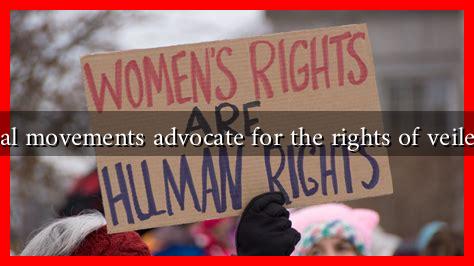-
Table of Contents
What Global Movements Advocate for the Rights of Veiled Women?
The rights of veiled women have become a focal point in discussions surrounding gender equality, cultural identity, and religious freedom. Various global movements advocate for these rights, emphasizing the importance of choice, autonomy, and respect for cultural practices. This article explores some of the most significant movements and organizations that champion the rights of veiled women, highlighting their goals, achievements, and challenges.
The Intersection of Feminism and Religious Freedom
Feminism has evolved to encompass a broader understanding of women’s rights, including the rights of women who choose to wear the veil. Many feminist movements around the world advocate for the rights of veiled women, arguing that the choice to wear a veil should be respected as a form of personal and cultural expression.
- Muslim Women’s Network UK: This organization focuses on empowering Muslim women and addressing issues such as discrimination and Islamophobia. They advocate for the rights of veiled women by promoting understanding and respect for their choices.
- Women’s March: The Women’s March, which began in the United States, has become a global movement advocating for various women’s rights, including those of veiled women. The movement emphasizes solidarity among women of all backgrounds and encourages dialogue about cultural practices.
Legal Advocacy and Human Rights Organizations
Several human rights organizations work specifically to protect the rights of veiled women, often focusing on legal reforms and policy changes. These organizations aim to combat discrimination and promote equality in various contexts.
- Amnesty International: This global organization has highlighted the plight of veiled women facing discrimination in various countries. Their reports often call for legal protections against discrimination based on religious attire.
- Human Rights Watch: HRW has documented cases of veiled women facing violence and discrimination, advocating for their rights through comprehensive reports and campaigns.
Grassroots Movements and Community Initiatives
Grassroots movements play a crucial role in advocating for the rights of veiled women at the community level. These initiatives often focus on education, empowerment, and raising awareness about the challenges faced by veiled women.
- Veil and the Voice: This grassroots initiative aims to amplify the voices of veiled women through storytelling and art. By sharing personal experiences, they challenge stereotypes and promote understanding.
- Muslim Women’s Association: This organization works to empower Muslim women through education and community support, advocating for their rights and addressing issues related to the veil.
Case Studies: Success Stories and Ongoing Challenges
While many movements have made significant strides in advocating for the rights of veiled women, challenges remain. Here are a few notable case studies:
- France’s Burqa Ban: In 2010, France implemented a ban on full-face veils, which sparked widespread protests from various organizations advocating for the rights of veiled women. The backlash highlighted the need for dialogue about cultural practices and individual rights.
- Canada’s Bill 21: In Quebec, a law prohibiting public sector employees from wearing religious symbols, including veils, has faced criticism from human rights organizations. Activists argue that this law discriminates against veiled women and undermines their rights.
Conclusion: The Path Forward
Global movements advocating for the rights of veiled women are essential in promoting understanding, respect, and equality. By addressing discrimination and empowering women to make their own choices, these movements contribute to a more inclusive society. As discussions around cultural identity and gender rights continue to evolve, it is crucial to support initiatives that respect the autonomy of veiled women and challenge stereotypes. The fight for their rights is not just about the veil; it is about the broader struggle for women’s rights and human dignity.
For more information on the rights of veiled women and ongoing advocacy efforts, you can visit Amnesty International.

